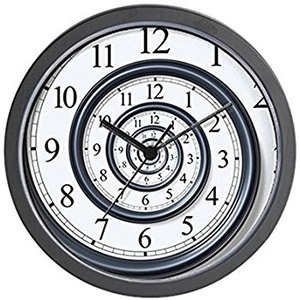Christmas Streak 63/88: Clock #2

Tom looked at the clock and saw that the hour hand and the minute hand form an angle of which happened to occur between and
He decides to sit down and stare at the clock until the hour hand and the minute hand form again.
For how long does he need to stare at the clock? Answer to 3 decimal places in minutes.
Details and assumptions:
-
A day is 24 hours.
-
The minute hand and the hour hand of the clock move perfectly continuously.
This problem is a part of <Christmas Streak 2017> series .
The answer is 40.000.
This section requires Javascript.
You are seeing this because something didn't load right. We suggest you, (a) try
refreshing the page, (b) enabling javascript if it is disabled on your browser and,
finally, (c)
loading the
non-javascript version of this page
. We're sorry about the hassle.
Let α be the angle between hour hand and minute hand. Let s m be angle speed for the minute hand, that is 6 0 m i n u t e s 3 6 0 ∘ = 6 ∘ / m i n u t e . Let s h be angle speed for the hour hand, that is 1 2 h o u r s 3 6 0 ∘ = 7 2 0 m i n u t e s 3 6 0 ∘ = 0 . 5 ∘ / m i n u t e . So, the change of α per minute is
Δ s = s h − s m = ( 0 . 5 − 6 ) ∘ / m i n u t e = ( − 5 . 5 ) ∘ / m i n u t e .
The negative sign shows that α continues to shrink after 5:00 pm . When 5:00 pm , α 5 : 0 0 = 1 5 0 ∘ . Let α 5 : 0 0 + n 1 = 1 1 0 ∘ . Since Δ s = ( − 5 . 5 ) ∘ / m i n u t e , then α 5 : 0 0 + n 1 = α 5 : 0 0 + ( n 1 − 1 ) ⋅ ( − 5 . 5 ) . We get
n 1 = 5 . 5 1 5 0 + 5 . 5 − 1 1 0 .
Let α 5 : 0 0 + n 2 = − 1 1 0 ∘ , that is 1 1 0 ∘ between hour hand and minute hand after 5 : 0 0 + n 1 . With the same method to get n 1 , we get
n 2 = 5 . 5 1 5 0 + 5 . 5 + 1 1 0 .
Thus, the minutes that he need to stare at the clock is
n 2 − n 1 = 5 . 5 1 5 0 + 5 . 5 + 1 1 0 − 1 5 0 − 5 . 5 + 1 1 0 = 5 . 5 2 2 0 = 4 0